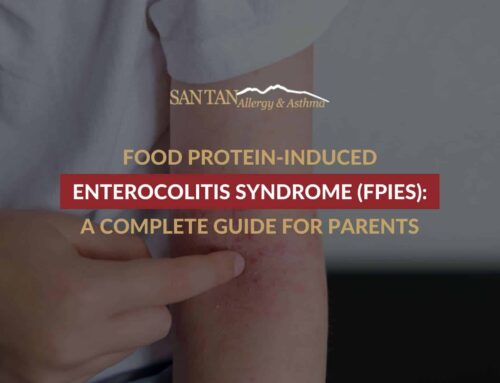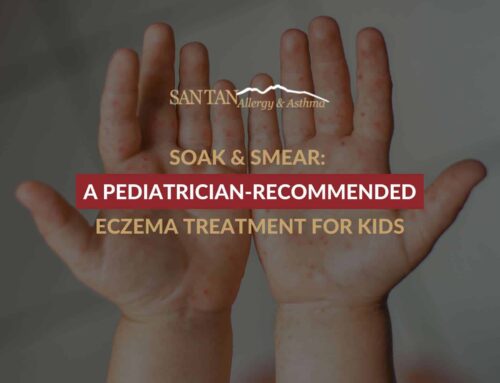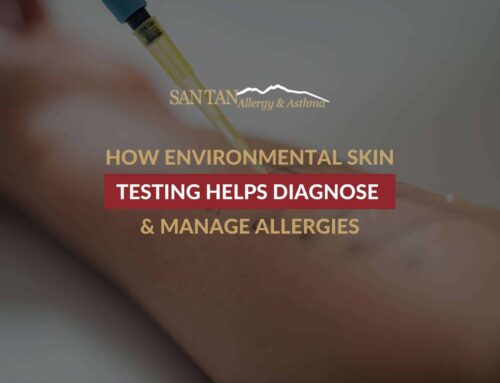What’s Changed In Peanut Allergy Advice: Key Updates & What You Should Do Now
Peanut allergies are a serious concern for many parents, as they can be life-threatening to their children. The idea of your child developing this allergy might feel like a ticking time bomb. But here’s the good news: preventing peanut allergies might actually be possible.
Allergists have been rethinking old advice, and the latest science is turning heads. So, what’s changed, and what should you be doing now? Let’s break it down.

What Causes Peanut Allergies & How To Recognize Them In Children
A peanut allergy happens when the immune system overreacts to proteins found in peanuts. Instead of treating them like harmless food, the body mistakes them for a threat and goes into defense mode.
That reaction can range from mild (with a rash or stomach pain) to severe and life-threatening (like anaphylaxis, which can cause breathing issues or even loss of consciousness)
Peanut allergies are usually lifelong and can be triggered by even a tiny amount of peanuts. It’s not the kind of allergy children typically ‘grow out of’. That’s why schools ban peanut snacks and why many parents live with constant worry once their child is diagnosed.
And the numbers don’t lie: peanut allergies in kids have been rising a lot over the past few decades. But is there anything we can do to prevent it from developing in the first place? That’s where things start to get interesting.
Outdated Peanut Allergy Advice vs. New Research: What Has Changed
Not too long ago, parents were told to avoid giving peanuts to babies and toddlers altogether, especially if there was a family history of allergies. According to allergists back then, delaying peanut exposure could give a child’s immune system enough time to “mature” and reduce the risk of allergy. That’s why peanuts were practically off-limits until age three, or even later.
Turns out, that was the wrong move.
In 2015, a game-changing study called the LEAP trial flipped everything upside down. Researchers found that introducing peanuts early (between 4 and 11 months old) actually reduced the risk of developing a peanut allergy by up to 80% in high-risk infants.
Since then, allergists and pediatricians have revamped their recommendations. Now, early introduction is seen not as risky, but as protective. Moreover, additional studies, including a recent one from the National Institutes of Health, have shown that introducing peanuts in infancy is an effective way to prevent peanut allergy into adolescence.
The Science Behind Preventing Peanut Allergies In Children
The LEAP study didn’t just suggest early peanut exposure was safe—it showed it could prevent allergies from developing in the first place.
That was a major shift. In the study, babies at high risk for peanut allergy (those with severe eczema or egg allergy) were split into two groups: one avoided peanuts, the other ate them regularly starting in infancy. By age five, the peanut-eating group had drastically lower allergy rates.
Follow-up studies confirmed these results: exposing the immune system to peanut proteins early (and consistently) helps it recognize peanuts as food, not a threat.
Now, major health organizations like the American Academy of Pediatrics and the National Institute of Allergy and Infectious Diseases recommend introducing peanut-containing foods as early as 4 to 6 months of age, especially for high-risk infants (but with medical guidance).
The bottom line? The immune system may actually learn tolerance when peanuts are introduced at the right time. In other words, the key is introducing them early, and safely.
Who Needs To Be Cautious When Introducing Peanuts To Babies
While early introduction can help prevent peanut allergies, it’s not a one-size-fits-all strategy. Some babies are at higher risk and need a little more care before diving in.
High-risk infants include those who:
- Have severe eczema.
- Already have a diagnosed egg allergy.
- Have a strong family history of food allergies.
If your child fits into any of those categories, don’t try peanut foods at home just yet. This is where an allergist comes in. They can assess your child’s risk and may recommend allergy testing or a supervised peanut introduction in a clinical setting, just to be safe.
Here are a few guidelines to give you a better idea of what to do regarding peanut allergy risks depending on your child’s clinical history:
For Children With Severe Eczema, Egg allergy, Or Both
- They have a high risk of peanut allergy
- Give peanut-containing foods as early as 4-6 months of age to reduce the risk of peanut allergy in the future.
- You should see a board-certified allergist for peanut allergy testing first, as this will determine if introducing peanuts is safe.
- Peanuts should be introduced under medical supervision, ideally in a doctor’s office.Bioware – James Askey SEO Spreadsheet
For Children With Mild Or Moderate Eczema
- Give the child peanut-containing foods at 6 months of age to reduce the risk of peanut allergy.
- These children don’t need to see a board-certified allergist first
- They can have peanut-containing foods introduced at home, but only when they can tolerate solid foods
Infants Without Any Eczema Symptoms Or Egg Allergy
- Give peanut-containing foods at 6 months of age, together with other solid foods
- These children don’t need to see a board-certified allergist first, either
- They can have peanut-containing foods introduced at home
If you’re unsure, consult your child’s doctor or an experienced allergist for guidance. Never give whole peanuts to a child under age 5, as they pose a choking hazard.
Practical Tips For Safely Introducing Peanuts To Your Child
Ready to introduce peanuts? Here’s how to do it safely and without stress.
- Start simple: Use smooth peanut butter thinned with water or breast milk. Remember not to give whole peanuts or chunky peanut butter to babies to avoid a choking hazard.
- Wait until your baby is ready for solids: This is usually between 4 and 6 months of age. Your baby should be able to sit up with support and show interest in food.
- Choose the right time: Pick a calm time of day when your baby is healthy, awake, and you can watch for any reaction for at least 2 hours afterward.
- Start small: Give a small amount first (like a quarter teaspoon). Wait and watch. If there’s no reaction, you can offer more gradually.
- Make it part of the routine: Once introduced, keep peanut-containing foods in your child’s diet regularly (around 3 times a week is a good goal).
Bonus tip: Peanut puffs or powdered blends designed for infants are convenient, safe alternatives if you’d rather not prepare peanut butter yourself.
If anything feels off or uncertain, talk to your pediatrician or allergist first.
When To Contact Allergy Doctors For Peanut Allergy Guidance
You don’t have to figure this out alone. Allergy doctors are the experts when it comes to navigating food allergies, especially in kids at higher risk. If you’re unsure about your child’s allergy risk, contact us at San Tan Allergy & Asthma for expert guidance and support in reducing that risk.
San Tan Allergy & Asthma
4915 E Baseline Rd #112
Gilbert, AZ 85234
Phone: 480-626-6600
Email: officemanager@santanallergy.com
Website: https://santanallergy.com/








